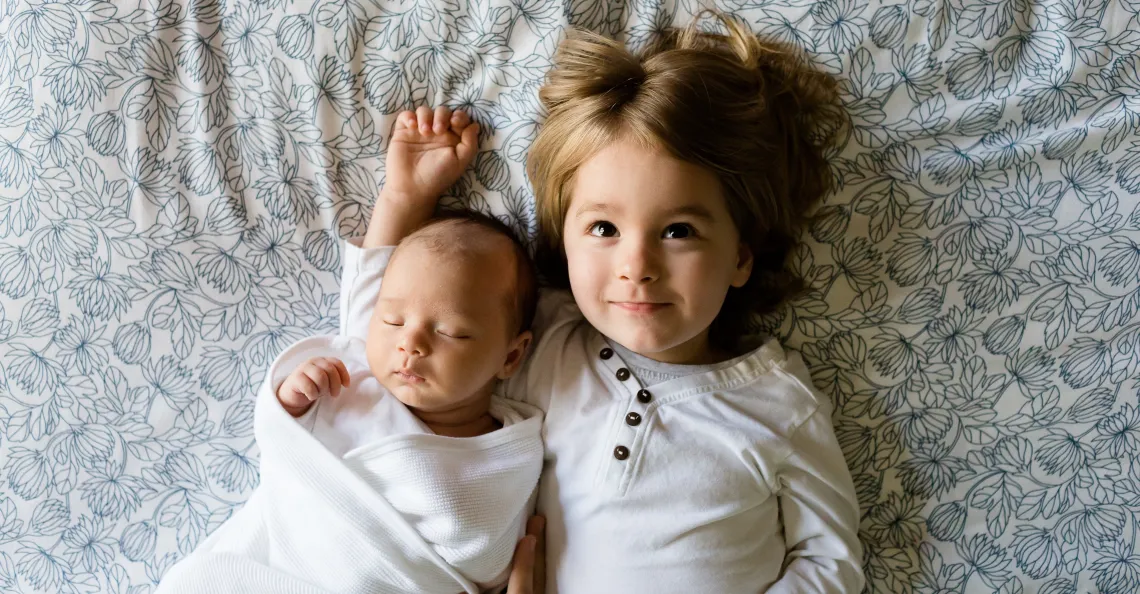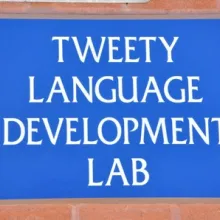
Tweety Language Development Lab
A Visit to the Tweety Language Development Lab!
Once you've scheduled your appointment with the lab, a lab member will send you an email or letter confirming the details of your appointment. Your letter or email will also include a map. Please take a look at this map prior to your visit, so that you know how to find us. Of course, if any details look confusing, contact us and we'll be happy to assist you in locating our lab.
Continue reading below for a more detailed idea of what a typical visit to the Infant Language Development Lab is like!
Parking
On the day of your appointment, head to the University of Arizona campus and park in our parking space located just East of the Psychology building. The best way to find us is to go East on 3rd/University from Campbell Avenue. When you arrive at a stop sign, continue going straight (it will look like you aren't supposed to, but you are!).

After you've continued straight for about 100 feet, you'll be forced to turn right into a parking lot. Look at the signs mounted on the wall ABOVE the parking spaces that are on your left. Once you see the sign that says Tweety Language Development Lab, park directly under that sign in our parking space.
You'll notice that a phone is mounted on the wall just in front of your car. Pick up the receiver, and the phone will automatically call our lab. A lab member will answer the phone and then head to the parking lot to greet you and bring you our parking pass. We ask that you remain with your vehicle at this time, otherwise we might have difficulty finding you! Unfortunately, we only have access to allow parking in the Tweety Language Lab parking space, so please double-check to make sure you've parked in the correct spot.
Discussing the Study
Once you and your child have been greeted and brought up to our lab on the fourth floor, you'll be seated in our comfortable reception area. Here, we'll spend a few minutes reminding you of what the study you and your child are participating in entails and what you can expect during the study. We will remind you how long the study will take, what sorts of sounds of images your child will be exposed to, the nature of the task your child will be involved in, and what your role in all of this is.
This is a fabulous time for you to ask questions and get clarification on anything that you might be curious about. All of our lab members are knowledgeable about their specific studies and enjoy discussing details with new and interested parents!
Updated 11/16/23
Light Paperwork
After we've answered all of your questions and you have a good understanding of what the study will be like, you'll be asked to fill-out some light paperwork. This will involve having you sign a parent permission form. You might also be asked to fill out a short questionnaire or a vocabulary inventory checksheet, depending upon the age of your child and the nature of the study he or she is participating in.
If you'd like to take a look at the paperwork before-hand, please select the appropriate link below next to the age of the study that your child is participating in. Note that one parent permission form is often used for more than one study. The studies that share a permission form are similar in their design and are often looking to answer similar research questions with infants and toddlers of different ages.
All studies: Questionnaire
9, 11, 16, & 20 month studies: Parent Permission Form
Participating in the Study
All of our infant studies conducted from the age of 4 to 20 months utilize one of two noninvasive study designs to help us understand how babies learn language:
The first of these designs is called the Head-turn Preference Procedure. As the name suggests, we use your child's head turns to allow him or her to control when and how long he or she is exposed to a language pattern. In these studies, your child will sit on your lap in a sound-proof booth with two speakers-- one mounted on the wall to your left, and one mounted on the wall to your right. Underneath each speaker is a light. There is also a light on the wall directly in front of you and your baby. The primary purpose of these lights is to grab your baby's attention. Infants participate in a short training phase followed by a testing phase. During the training phase, we expose your baby to an artificial language for approximately two to three minutes. After this, the test phase begins. A trial begins with the light flashing directly in front of your child. As soon as your baby looks toward the center light, one of the side lights begins to flash. When your baby looks at the side light that has begun to flash, a string of words is played. The strings either conform to the artificial language which your baby was initially exposed to during the training phase, or they are ungrammatical and do not follow the same rules as the training language. We measure how long your baby chooses to listen to each of the two types of language samples that he or she is presented with. Most often, infants will show that they have learned the new pattern by listening longer to the ungrammatical strings. On average, the entire procedure, including both training and testing, takes five minutes.
The idea behind habituation studies is that, once your child becomes familiar with a sound, an image, or a combination of both, he or she will show a reduction in the amount of attention that they pay to the given stimulus. In short, we expect that babies will become bored and uninterested once they've learned something that they've been presented with repeatedly. Once a child shows a significant decrease in the amount of attention they are paying, we will then switch some aspect of the stimulus that he or she is being exposed to, to see if their initial level of attention recovers. In these studies, your child will sit on your lab in a sound-proof booth with a projector screen on the wall in front of you. We will then display an image or images on the screen. Usually, the images are objects which are presently concurrently with a name, repetitive images (like a bullseye or checkerboard) meant to keep your child visually entertained while they hear a string of words, or a cartoon image of a baby sucking on a pacifier to keep their attention intermittently throughout the study. We present different trials repeatedly, until your baby meets what is called a "habituation criterion" (in simpler terms, until your baby gets bored!). At this juncture, we switch the stimuli that we are presenting to see if your child regains interest in the study. For instance, if we present an object to your child over and over again with the same name each time, will they "perk up" or notice the difference when we change the initial-consonant sound in the name of the object, or if we assign a totally different name to the object? On average, these studies take about six to eight minutes.
Choosing a Book
Once the study is complete, you will be brought back into our reception area, where your child will choose a book or toy for participating. If you have any further questions at this point, we're happy to answer them. Also, if you're ready to schedule for the next study, we can often do that at the close of your appointment. After we've wrapped up, we will walk you and your baby downstairs to your car.
Interested in having your baby participate?
If you've read the information above and think you and your child(ren) might be interested in participating in our studies, we'd love to have you!
Please send us an email at tweetylanguagedevelopmentlab@gmail.com, call us at (520) 626-5720, or fill out this form to get signed up! When you sign up, we'll ask you for some basic contact information as well as information regarding your child's birth date, birth term (weeks gestation at time of birth), and birth weight. We will then work out a time that is convenient for you to come to our lab. Once we've finalized your appointment date and time, we'll send an email confirming your appointment details and providing instructions for getting to our lab.
Even if you choose not to sign up, we thank you very much for your interest in our lab and our research. The kindness of the members of the Tucson and surrounding communities is what has allowed our lab to contribute to the knowledge base concerning language development and make strides in our understanding of how infants learn language for over 18 years!

